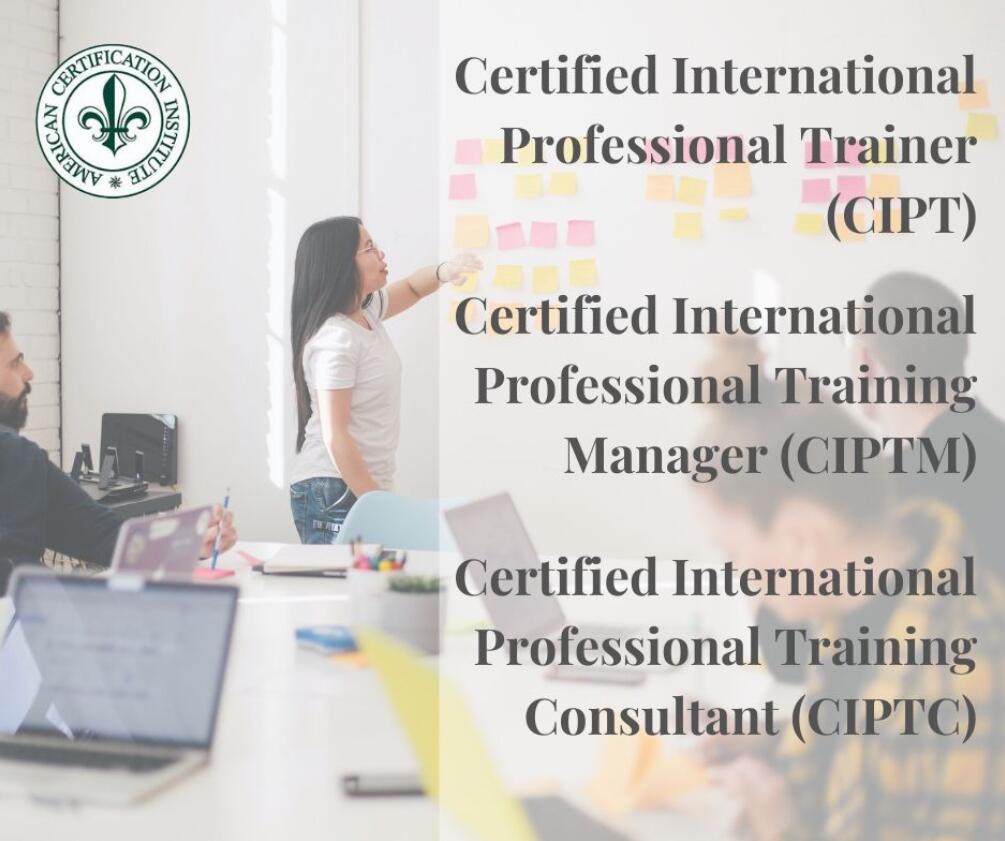Globalization represents a revolutionary integration of capital, technology and information across national borders in a way that is creating a single global market and, to some degree, a global village. While globalization is of greatest concern to businesses and agencies working transnationally, globalization trends affect all businesses whether or not they are truly global. The International Training certifications are designed for the sophisticated manager who knows from his/her experience THAT EVERY MANAGER IS A TRAINER and further that TRAINING, LIKE MOST BUSINESS FUNCTIONS, IS GLOBAL/INTERNATIONAL IN ITS OUTLOOK.
At the completion of LEVEL I, students will be able to explain:
1. The various phases of the training cycle.
2. The use of needs assessment to determine how to meet organizational (training) goals.
3. The degree of emphasis given by organizations to career skills training.
4. Why the job is the starting point for what a person needs to know within the organization.
5. The various sources of information relating to learning and training needs, including exit interviews, customers, and end-of-course evaluations, among others.
6. When an organization should conduct needs assessments.
7. The various methods used to conduct needs assessments.
8. The three necessary components of a behavioral cognitive student learning objectives.
9. The six levels of Bloom’s (Cognitive) Taxonomy and how to employ them in preparing learning objectives and evaluations.
10. Why learning is a process and not an output.
11. The difference between pedagogy and andragogy.
12. Kolb’s Learning Style Inventory and its focus.
13. How to employ Maslow’s Hierarchy of Needs in developing courses and programs of instruction.
14. The use of learning theories in designing and developing courses and programs of instruction.
15. The major (learning) differences between older and younger students.
16. How adult learners learn best.
17. The relationship between instructional objectives and instructional strategies.
18. The main advantages and disadvantages of the lecture method and other methods of instruction.
19. The different methods of supplementing lectures in order to stimulate interest and prevent boredom.
20. The proper use of case studies in courses.
21. The various instructional aids available and how to use them.
22. The use of presentation software to prepare color charts, flipcharts, and handouts.
23. The proper ratio of instructor preparation to delivery time.
24. The various stakeholders involved in training evaluation.
25. Reasons why organizations often fail to conduct training evaluations.
26. When to conduct training evaluations.
27. The most effective training evaluation method.
28. The importance of performing evaluations frequently during a course.
29. The reason why multiple observations are used in recording a task or activity during needs assessment and evaluation.
30. How trainers improve validity and statistical significance of their exams and other evaluations.
CIPT Body of Knowledge:
The Trainer as a Technical Expert
Understanding Adult Learning
Competency Identification Skills
Feedback Skills
Student Learning Objectives Preparation Skills
Learner observation skills
Presentation Skills
Subject Matter Understanding
Writing Skills
Learner Evaluation Skills
The Trainer and His/Her Training Environment
Understanding of Business and Management Practices
The Learning Organization
Ethics
Computer Competence
Electronic Systems Skills
Needs Assessment
Group Process Skills
Records Management Skills
Facilitation Skills
Training Modes and Techniques
The Trainer as an Organizational Change Agent
Career Development Techniques
Organizational Behavior Techniques & Understanding
Intellectual Versatility (Creative Thinking)
Negotiation Skills
Questioning Skills
Relationship Building Skills
Self-Knowledge
The certification program for CIPT consists of an 80 question multiple choice examination prepared from the INTERNATIONAL PROFESSIONAL TRAINER BODY OF KNOWLEDGE (IPTBOK).
The examination locations are determined by the individual candidates and their proctors. A proctor may be an individual who is currently an active Certified Member, or a manager, supervisor, teacher, professor, or anyone of such standing. Each proctor is determined on a case-by-case basis. ACI wishes to make it possible for every qualified candidate to complete the certification program in a convenient and timely manner.
















 1-302-570-0886
1-302-570-0886  admin@amcertinst.org
admin@amcertinst.org



